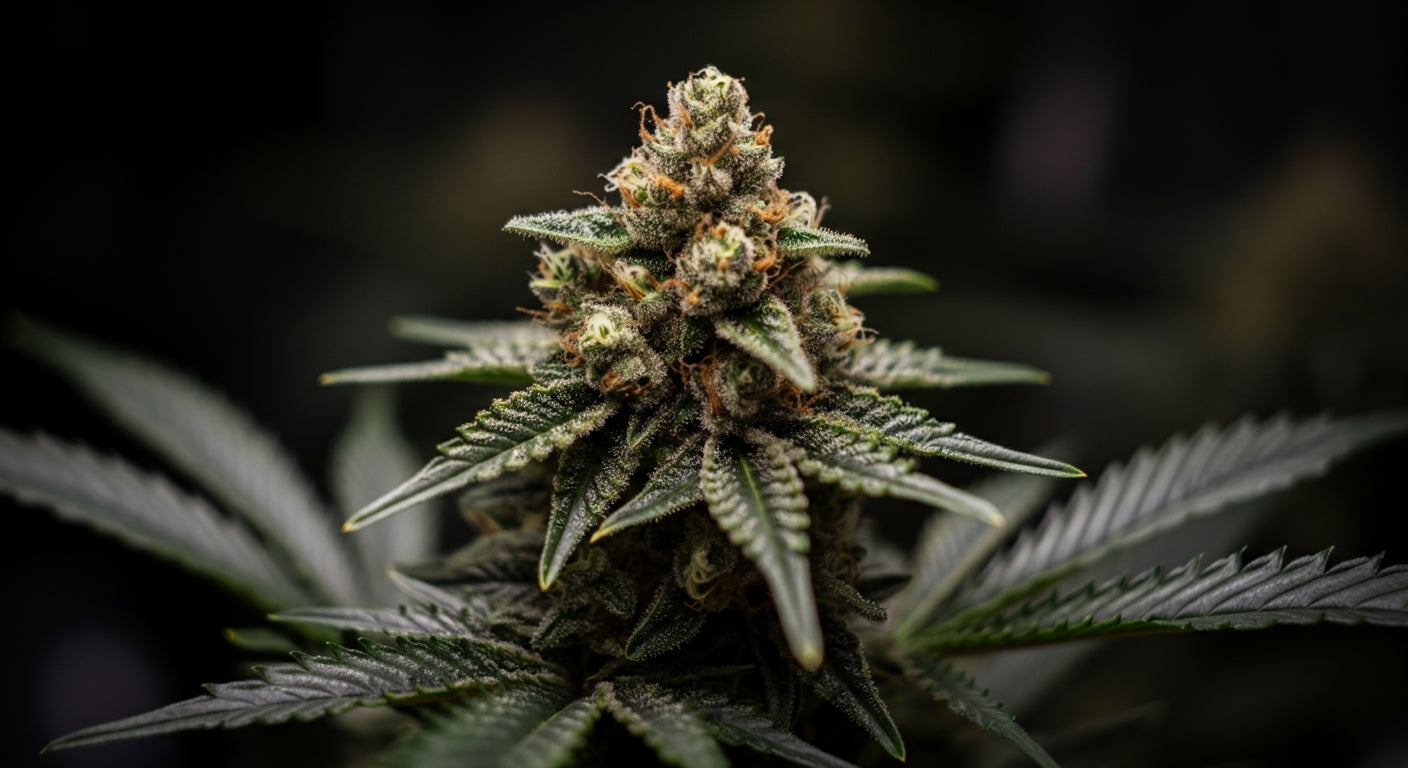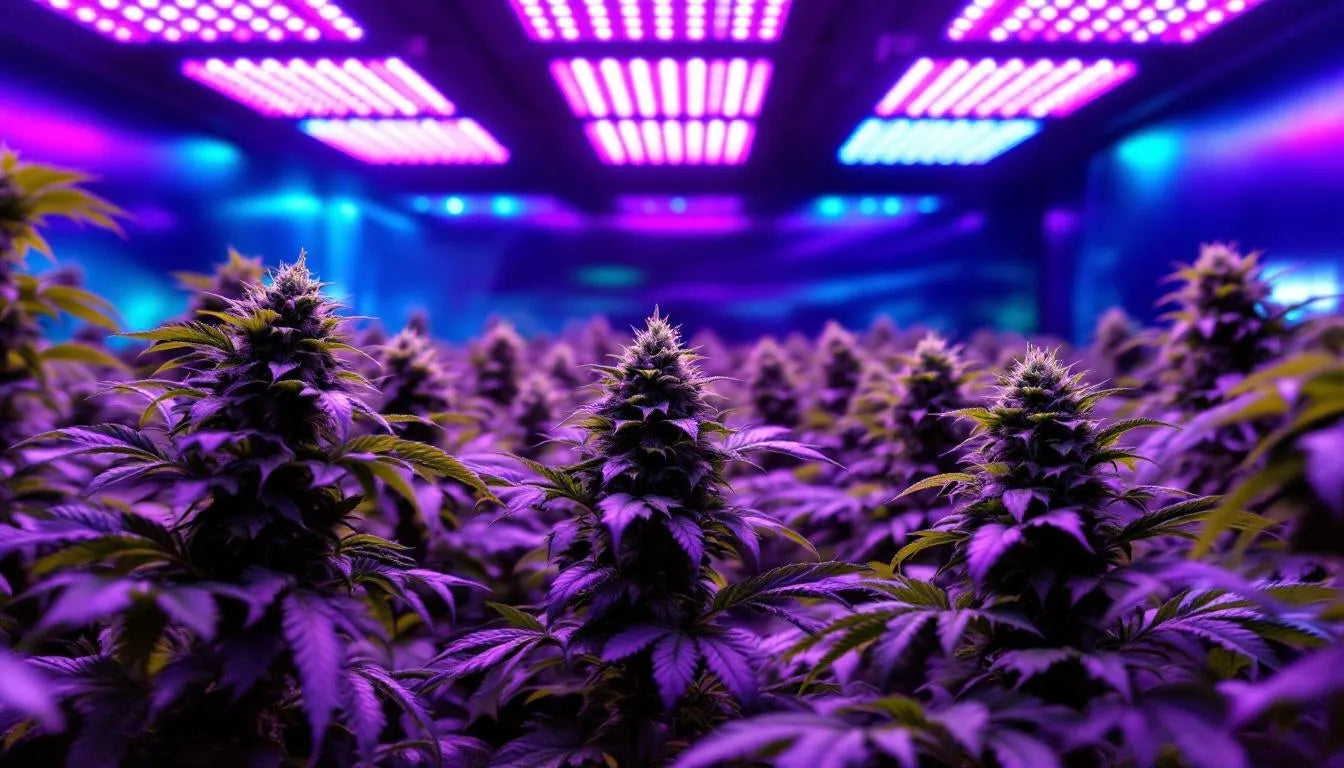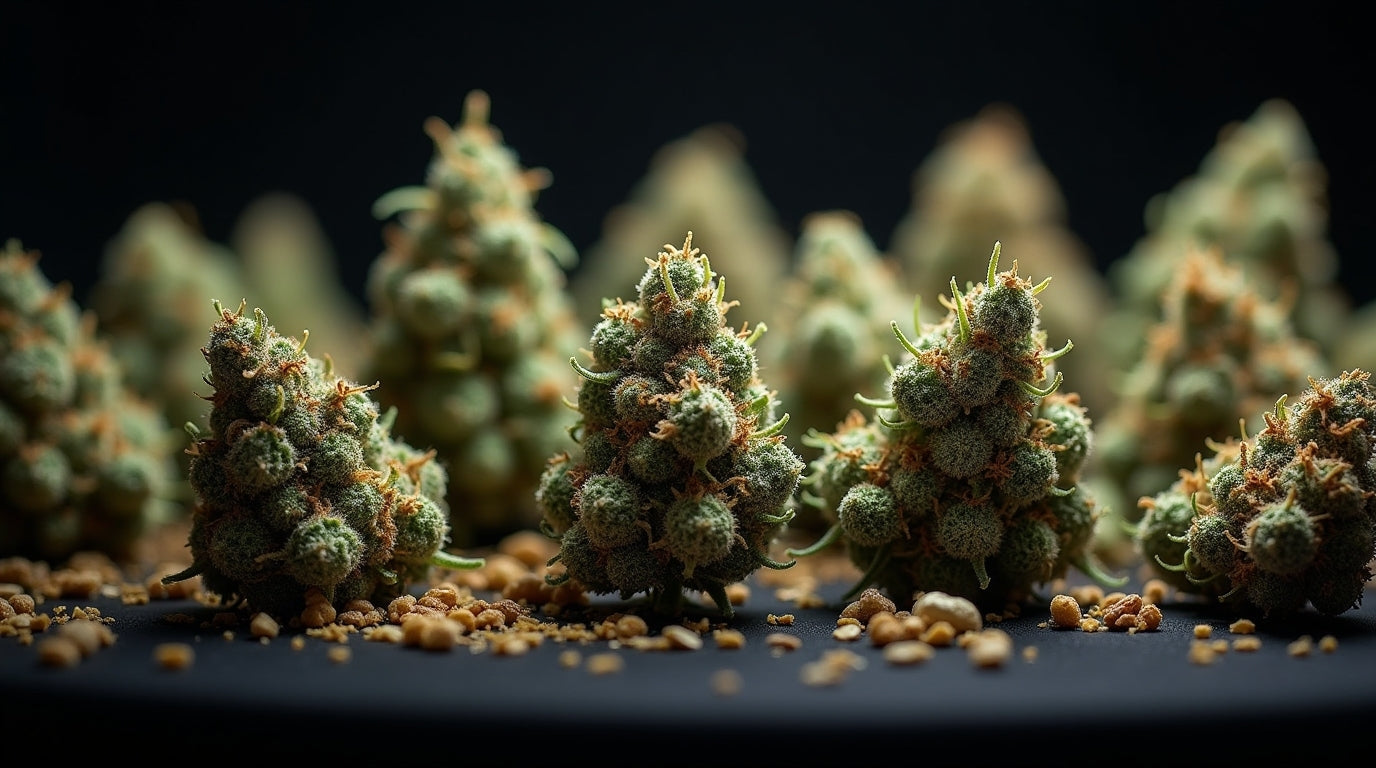
How to Grow Weed Plant: The Complete Step-by-Step Guide for Home Cultivators
Growing a weed plant at home is one of the most rewarding experiences for cannabis enthusiasts. Whether you're interested in cultivating for personal use or exploring this fascinating hobby, this comprehensive guide will teach you everything you need to know about successfully growing cannabis plants from seed to harvest.
With proper knowledge, quality equipment, and attention to detail, anyone can grow healthy, potent cannabis plants in the comfort of their own home. The key is understanding each stage of plant development and providing optimal growing conditions throughout the entire lifecycle.
Understanding the Cannabis Plant Lifecycle
The Four Essential Growth Stages
Cannabis plants follow a predictable growth pattern with distinct stages that require different care approaches. Understanding these phases is crucial for successful cultivation:
Germination Stage (Days 1-7): Seeds sprout and develop initial root systems Seedling Stage (Weeks 2-4): Young plants establish basic structure and first true leaves Vegetative Stage (Weeks 5-16): Rapid growth period where plants develop size and strength Flowering Stage (Weeks 17-25): Plants produce buds containing cannabinoids and terpenes
Each stage demands specific environmental conditions, lighting schedules, and nutrient requirements. Mastering these transitions separates successful growers from those who struggle with poor yields or plant health issues.

Choosing Your Growing Method: Soil vs. Hydroponic
Traditional Soil Growing
Soil cultivation remains the most beginner-friendly approach to growing weed plants. Quality organic soil provides natural nutrients, beneficial microorganisms, and forgiveness for minor mistakes. For newcomers, soil offers several advantages:
- Natural nutrient buffering - Soil holds and releases nutrients gradually
- Microbial ecosystem - Beneficial bacteria support plant health
- pH stability - Good soil naturally maintains proper pH levels
- Error tolerance - Soil forgives watering and feeding mistakes better than other methods
When selecting soil, choose organic potting mixes designed for cannabis or vegetables. Avoid soil with extended-release fertilizers, which can burn young plants and interfere with proper feeding schedules.
Advanced Hydroponic Systems
Hydroponic growing systems offer faster growth rates and potentially higher yields for experienced cultivators. By delivering nutrients directly to roots in water-based solutions, hydroponic systems eliminate soil-related issues while maximizing nutrient uptake.
Popular hydroponic methods include Deep Water Culture (DWC), which suspends roots in oxygenated nutrient solutions for explosive growth rates. However, hydroponic systems require more precise monitoring and technical knowledge than soil growing.
For growers interested in automated solutions, hydroponic grow boxes provide turnkey systems that handle much of the complexity while delivering professional results.
Essential Equipment for Growing Weed Plants
Creating the Perfect Growing Environment
Successful cannabis cultivation requires controlling environmental factors that affect plant health and development. Gorilla Grow Tents provide the perfect solution for creating optimal growing conditions while maintaining complete discretion.
The 3x3 grow tent offers ideal space for 2-4 plants, providing enough room for healthy development without overwhelming new growers. These tents feature reflective interiors that maximize light efficiency and sturdy construction that supports heavy equipment loads.
Lighting: The Engine of Plant Growth
Cannabis plants require intense, full-spectrum lighting to produce dense, potent buds. Modern LED technology has revolutionized home growing by providing optimal light spectrums while generating less heat than traditional alternatives.
Xi LED grow lights represent the pinnacle of cannabis lighting technology, offering plant-specific spectrums optimized for each growth stage. The Xi420 LED grow light provides perfect coverage for most home grows while integrating with smart monitoring systems.
Key lighting considerations include:
- Light intensity measured in PPFD (Photosynthetic Photon Flux Density)
- Spectrum quality with proper ratios of blue, red, and white light
- Heat management to prevent temperature-related stress
- Energy efficiency for sustainable long-term operation
Environmental Control Systems
Maintaining proper temperature, humidity, and airflow prevents common problems like mold, pests, and nutrient deficiencies. Essential environmental equipment includes:
Ventilation Systems: Exhaust fans remove hot, humid air while intake fans provide fresh air circulation. Carbon filters eliminate odors, making indoor growing more discreet.
Climate Monitoring: Digital hygrometers and thermometers help maintain optimal conditions throughout the grow cycle.
Air Movement: Oscillating fans strengthen plant stems while preventing stagnant air that encourages mold growth.
Step-by-Step Growing Process
Week 1-2: Germination and Early Growth
Start with quality genetics from reputable seed banks or licensed dispensaries. Germination methods include paper towel techniques, direct soil planting, or specialized germination cubes.
Optimal Conditions for Germination:
- Temperature: 70-80°F (21-27°C)
- Humidity: 65-75%
- Light: Gentle indirect lighting
- Moisture: Consistently damp but not waterlogged
Once seeds crack and show white taproots, carefully transplant to final containers or starter pots. Handle seedlings gently, as they're extremely fragile during this stage.
Week 3-8: Vegetative Growth Phase
The vegetative stage is when cannabis plants develop their structure and size. This phase requires 18-24 hours of daily light to prevent premature flowering.
Vegetative Stage Requirements:
- Lighting: 18-24 hours of full-spectrum LED light daily
- Temperature: 75-85°F (24-29°C) during lights on, 65-75°F (18-24°C) lights off
- Humidity: 55-70% relative humidity
- Nutrients: Higher nitrogen levels for leaf and stem development
- pH Levels: 6.0-7.0 for soil, 5.5-6.5 for hydroponic systems
During vegetative growth, implement training techniques like Low Stress Training (LST) or trellis netting to maximize light exposure and increase yield potential.

Week 9-16: Flowering Stage
Flowering begins when plants receive exactly 12 hours of light and 12 hours of uninterrupted darkness daily. This light cycle triggers hormonal changes that initiate bud production.
Flowering Stage Requirements:
- Light Cycle: Strict 12/12 light/dark schedule
- Temperature: 65-80°F (18-27°C) with cooler nights
- Humidity: 40-50% to prevent mold in dense buds
- Nutrients: Reduce nitrogen, increase phosphorus and potassium
- Air Circulation: Increased airflow to prevent moisture buildup
Monitor plants closely during flowering for signs of male plants (if growing from regular seeds) and remove them immediately to prevent seed production.
Monitoring Plant Health
Understanding how plants get nutrients is crucial for maintaining healthy growth throughout all stages. Cannabis plants communicate their needs through leaf color, growth patterns, and overall appearance.
Common deficiency symptoms include:
- Nitrogen deficiency: Yellowing lower leaves during vegetative growth
- Phosphorus deficiency: Dark leaves with purple stems during flowering
- Potassium deficiency: Brown leaf edges and weak stems
- pH imbalances: Nutrient lockout causing multiple deficiency symptoms
Regular monitoring and prompt corrections prevent minor issues from becoming major problems that affect final yield and quality.
Advanced Growing Techniques
Plant Training Methods for Maximum Yields
Experienced growers use various training techniques to optimize light exposure and increase bud production:
Low Stress Training (LST): Gently bending and securing branches to create an even canopy allows all buds to receive direct light, significantly increasing yields in limited space.
Screen of Green (SCROG): Using trellis netting to support and spread branches creates a uniform canopy that maximizes light utilization and bud development.
Topping and FIMing: Pruning techniques that encourage multiple main branches instead of single dominant colas, creating bushier plants with more flowering sites.
Defoliation: Strategic removal of fan leaves during flowering improves light penetration to lower bud sites, potentially increasing overall yield and quality.
Nutrient Management Strategies
General Hydroponics nutrients provide precise control over plant nutrition, allowing growers to optimize feeding schedules for maximum growth and potency.
Vegetative Nutrition Focus:
- Higher nitrogen (N) for vigorous leaf and stem growth
- Moderate phosphorus (P) for strong root development
- Adequate potassium (K) for overall plant health
- Essential micronutrients for complete plant nutrition
Flowering Nutrition Emphasis:
- Reduced nitrogen to prevent excessive leaf growth
- Increased phosphorus for dense bud development
- Higher potassium for resin production and quality
- Calcium and magnesium supplementation for cell structure
Harvest and Post-Harvest Processing
Recognizing Optimal Harvest Timing
Proper harvest timing dramatically affects potency, flavor, and overall quality. Trichomes (microscopic resin glands) provide the most accurate harvest indicators:
- Clear trichomes: Immature, harvest too early
- Cloudy/milky trichomes: Peak THC production, optimal harvest window
- Amber trichomes: THC converting to CBN, more sedative effects
Use a jeweler's loupe or digital microscope to examine trichomes on buds rather than leaves for accurate assessment.
Drying and Curing Process
Proper drying and curing preserves potency while developing complex flavors and aromas:
Drying Phase (7-14 days):
- Temperature: 60-70°F (15-21°C)
- Humidity: 45-55%
- Air circulation: Gentle airflow, not direct on buds
- Darkness: Complete darkness prevents degradation
Curing Phase (2-8 weeks):
- Storage: Glass jars filled 75% full
- Humidity: 58-65% (use humidity packs if needed)
- Temperature: Cool, stable conditions
- Burping: Open jars daily for first week, then weekly

Common Growing Mistakes to Avoid
Overwatering and Nutrient Burn
The most frequent beginner errors involve overwatering and overfeeding plants. Cannabis prefers wet-dry cycles where soil partially dries between waterings. Similarly, plants often thrive with lighter feeding schedules than many growers assume.
Signs of overwatering include droopy leaves, slow growth, and increased susceptibility to root rot. Nutrient burn appears as brown, crispy leaf tips and edges, indicating excessive feeding levels.
Environmental Instability
Fluctuating conditions stress plants and reduce both yield and quality. Investing in quality environmental controls, like those integrated in complete grow tent kits, helps maintain stable conditions throughout the entire grow cycle.
Light and Security Issues
Inconsistent lighting schedules, especially during flowering, can cause plants to hermaphrodite or revert to vegetative growth. Similarly, maintaining discretion and security protects both plants and growers from potential legal or safety issues.
Legal Considerations and Compliance
Understanding Local Cannabis Laws
Before growing any weed plants, thoroughly research local and state regulations regarding home cultivation. Laws vary significantly and often include specific requirements for:
- Plant limits: Maximum number of plants allowed per household
- Growing locations: Restrictions on where plants can be cultivated
- Security measures: Required locks, enclosures, or surveillance systems
- Documentation: Record-keeping requirements for plant tracking
Responsible Growing Practices
Successful home cultivation involves more than just growing healthy plants. Responsible growers maintain detailed records, follow all applicable laws, and prioritize safety in their growing operations.
FAQ Section
How long does it take to grow a weed plant from seed?
Most cannabis strains require 3-5 months from seed to harvest, including 2-4 weeks for germination/seedling, 4-8 weeks vegetative growth, and 8-12 weeks flowering time, depending on genetics.
What size grow tent do I need for one plant?
A 2x2 grow tent can accommodate one large plant, while a 3x3 tent provides optimal space for 1-2 plants with room for training techniques and equipment.
Is soil or hydroponic growing better for beginners?
Soil growing is generally more forgiving for beginners, providing natural nutrient buffering and pH stability. Hydroponic systems offer faster growth but require more precise monitoring and technical knowledge.
How much does it cost to grow one weed plant?
Initial setup costs range from $300-800 for a single plant grow, depending on equipment quality. Complete grow tent kits provide better value by including all essential components.
What's the most important factor for growing healthy cannabis?
Consistent environmental conditions are crucial - stable temperature, humidity, lighting schedules, and airflow prevent most common growing problems and ensure healthy plant development throughout all growth stages.
Summary
Bottom Line: Successfully growing weed plants requires understanding plant biology, maintaining optimal environmental conditions, and using quality equipment throughout the entire growth cycle. Focus on consistency, patience, and attention to detail for the best results.
Growing cannabis combines horticultural science with artistic cultivation techniques, rewarding dedicated growers with high-quality medicine and deep satisfaction. Success comes from careful planning, quality genetics, proper equipment, and learning from each growing experience.
Start Growing Your Perfect Cannabis Plants Today
Transform your cannabis cultivation dreams into reality with professional-grade equipment designed for home growers. Gorilla Grow Tent provides everything needed for successful indoor cultivation, from beginner-friendly complete grow tent kits to advanced hydroponic growing systems.
Whether you choose traditional soil methods or cutting-edge hydroponic techniques, our equipment ensures optimal growing conditions from germination through harvest. With lifetime grow support from experienced Northern California cultivators, you'll have expert guidance every step of the way.
Don't wait another growing season to start your cannabis cultivation journey. Browse our complete selection of grow tents, LED grow lights, and growing accessories to build the perfect setup for your space and goals. Join thousands of successful home growers who trust Gorilla for consistently excellent results, harvest after harvest.

Lena Myles
I'm a mushroom enthusiast and home cook based in Oregon. I'm passionate about foraging and creating fungi-focused recipes, especially delicious, plant-based dishes using gourmet mushrooms like trumpet, shiitake, and oyster. When I’m not in the kitchen, you’ll usually find me wandering the woods in search of new wild flavors.


